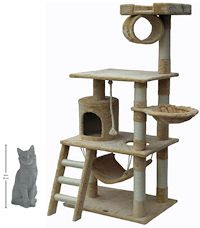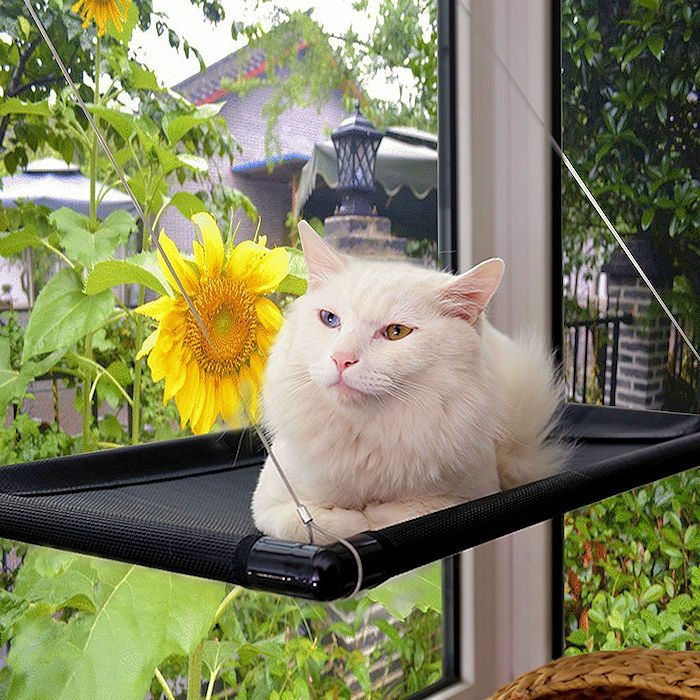 The Pallas Cat can be found in Central Asia and are much smaller than the average exotic cat. They generally have a lifespan of 10 years, and are also known as Manul. The most interesting aspect of the Pallas Cat is perhaps that they are the oldest cats in the world. Because there are sources out there which indicate that the Pallas Cat is perhaps the oldest living species of cat in the world, they are highly regarded.
The Pallas Cat can be found in Central Asia and are much smaller than the average exotic cat. They generally have a lifespan of 10 years, and are also known as Manul. The most interesting aspect of the Pallas Cat is perhaps that they are the oldest cats in the world. Because there are sources out there which indicate that the Pallas Cat is perhaps the oldest living species of cat in the world, they are highly regarded.
A website dedicated to cats known as Of Cats, states that the Pallas Cat is perhaps one of the oldest living cats in the world. Of course, we really do not have enough evidence to make it a fact.
The Pallas Cat can be found through Southern Asia and Western China. They are not a threatened species because they seem to be quite common, and sightings are not rare at all. They prefer to reside in the barren mountains to the rocky desert which shows that they have great adaptive skills so that they can adjust to the different environments and still survive.
They are sometimes seen residing in mountains as high as 15000 feet. While they are common, they are still considered a threatened species of exotic cat, and we need to work to protect them. The Pallas Cat got their name from the gentlemen who had discovered them; his name is Peter Pallas.
At first glance, many would just confuse or think that the Pallas Cat is just another house-hold cat; however, they are more than that! The Pallas Cat weighs around 22 inches in length, and will weigh between seven to twelve pounds. The Pallas Cat is known to have long fur that is coarse to the touch. The base color of the cat’s fur is grey, but the guard hairs are white which gives it a stunning effect. It gives it a sparkling appearance. Also, one some of their backs, there are faint black markings while their faces resemble the lynx with the stripes on their throat. They have long whiskers, and a long ten-inch tail that is tipped black. Their eyes are rather unusual compared to other cats though as other cats’ eyes contract to slits; however, the Pallas cat’s eyes contract to round circles!
The Pallas Cat spends most of the day sleeping, and is generally found residing in burrows, rock fissures and caves. While many people believe that they are a nocturnal species, they are actually crepuscular meaning that they are active right before twilight or sunrise. The Pallas Cat will often hunt solitary; they usually will feed on a variety of birds and small mammals especially rodents.
The Pallas Cat is truly an interesting species of cat; the belief that they are the oldest specie of cats in the world gives you a reason to look at them with a different perspective.
Pallas’s cat
Source: http://www.arkive.org/pallass-cat/otocolobus-manul/Pallas’s cat (Otocolobus manul) is about the size of a domestic cat but looks much larger due to its stocky build and long, dense coat, which helps shield it from the cold in its frosty habitat.
The fur, which is nearly twice as long on the underparts and tail as it is on the top and sides, seasonally changes colour, from a frosted grey in winter to a grey/fox-red in the spring. Hair length and density also varies seasonally, being longer and heavier in the cold seasons. The short, stocky legs are marked with indistinct black bands and the bushy black-tipped tail is encircled with dark rings towards the end.
Contrasting patches of pale white-cream fur exists on the chin, throat, inner ears and just beneath the eye, while two dark stripes run diagonally across each cheek and the crown is patterned with little black spots. The colour and patterning of the hair provides Pallas’s cat with a high level of camouflage and amongst rocks it can remain perfectly concealed.
The small, rounded ears are set low on the sides of the short, broad head, an adaptation to stalking prey in open country where there is little cover.
Unlike other small cats, the pupils in the large eyes of Pallas’s cat contract to small circles rather than slits.








Leave a Reply
You must be logged in to post a comment.